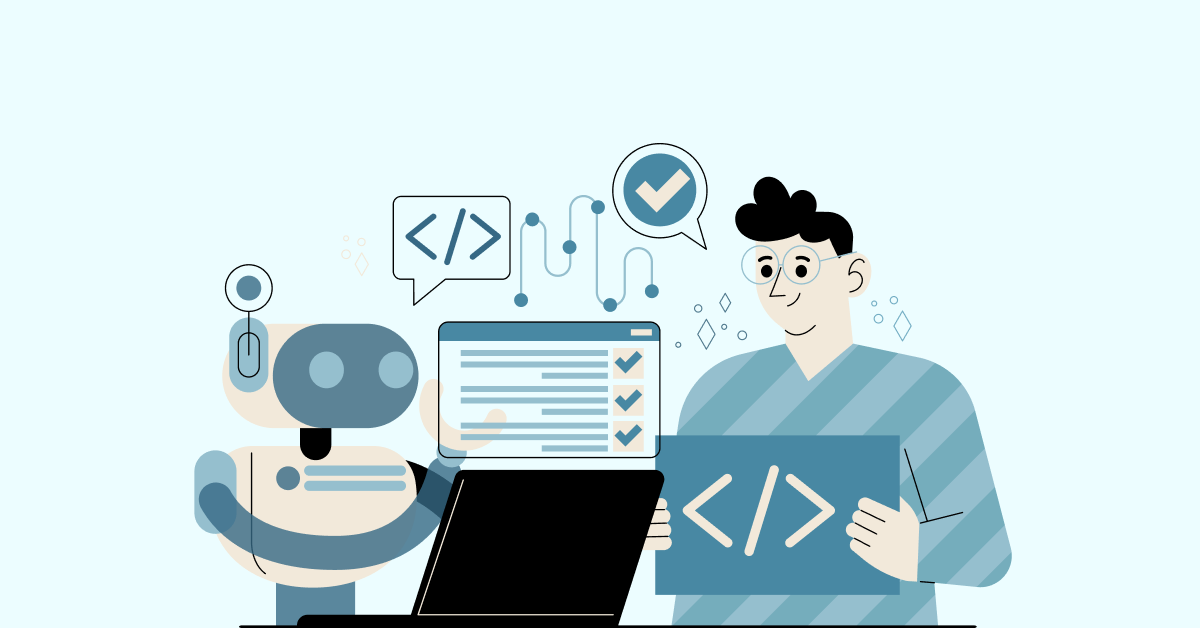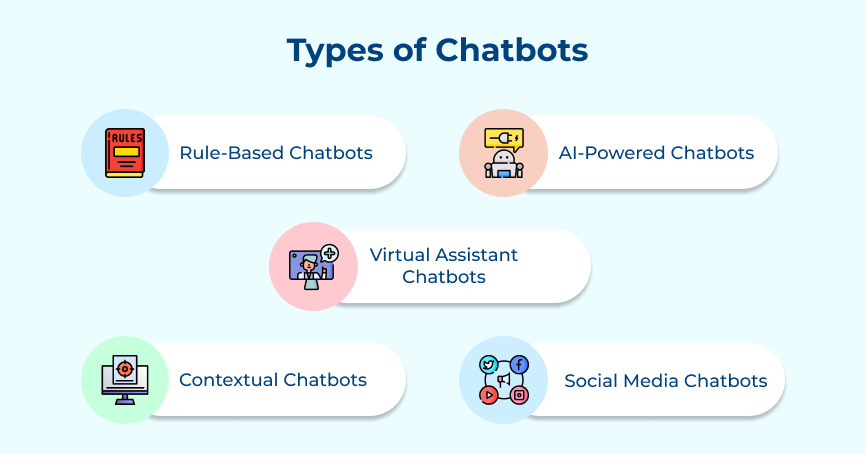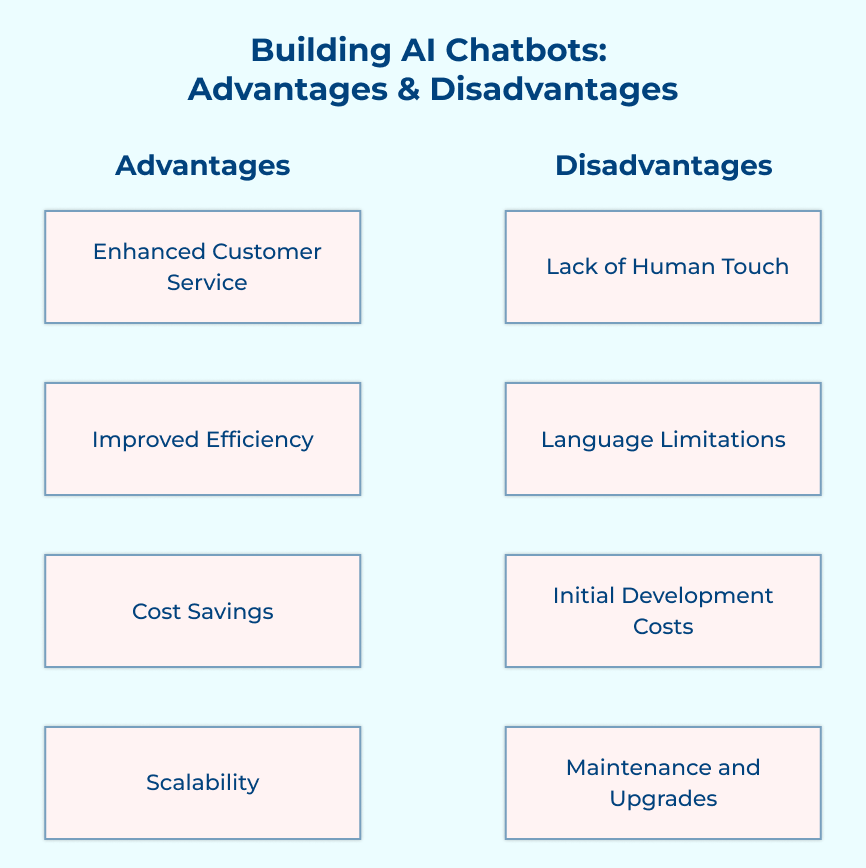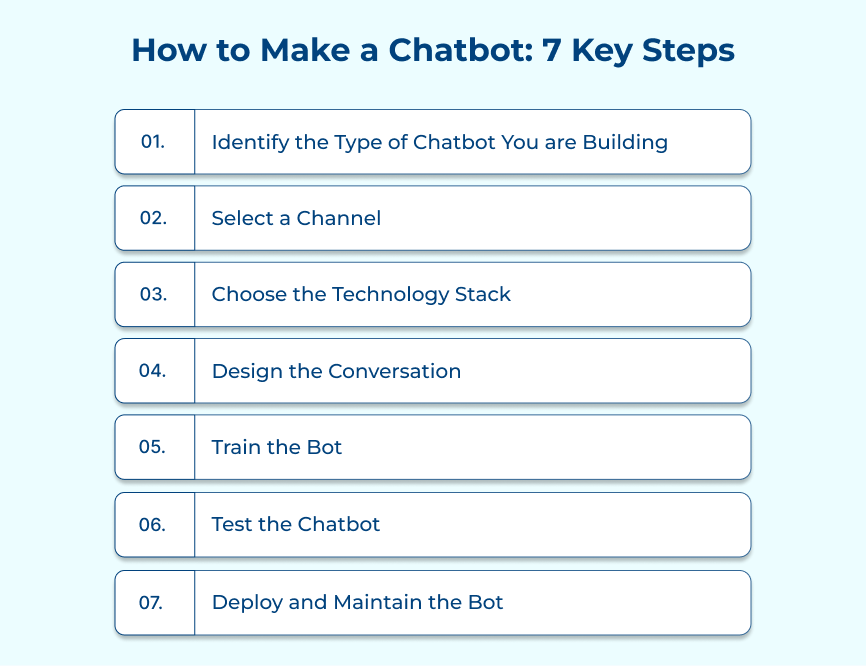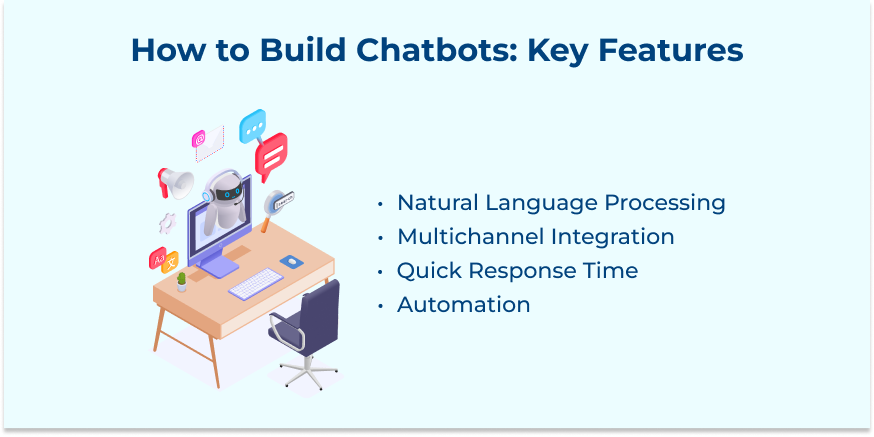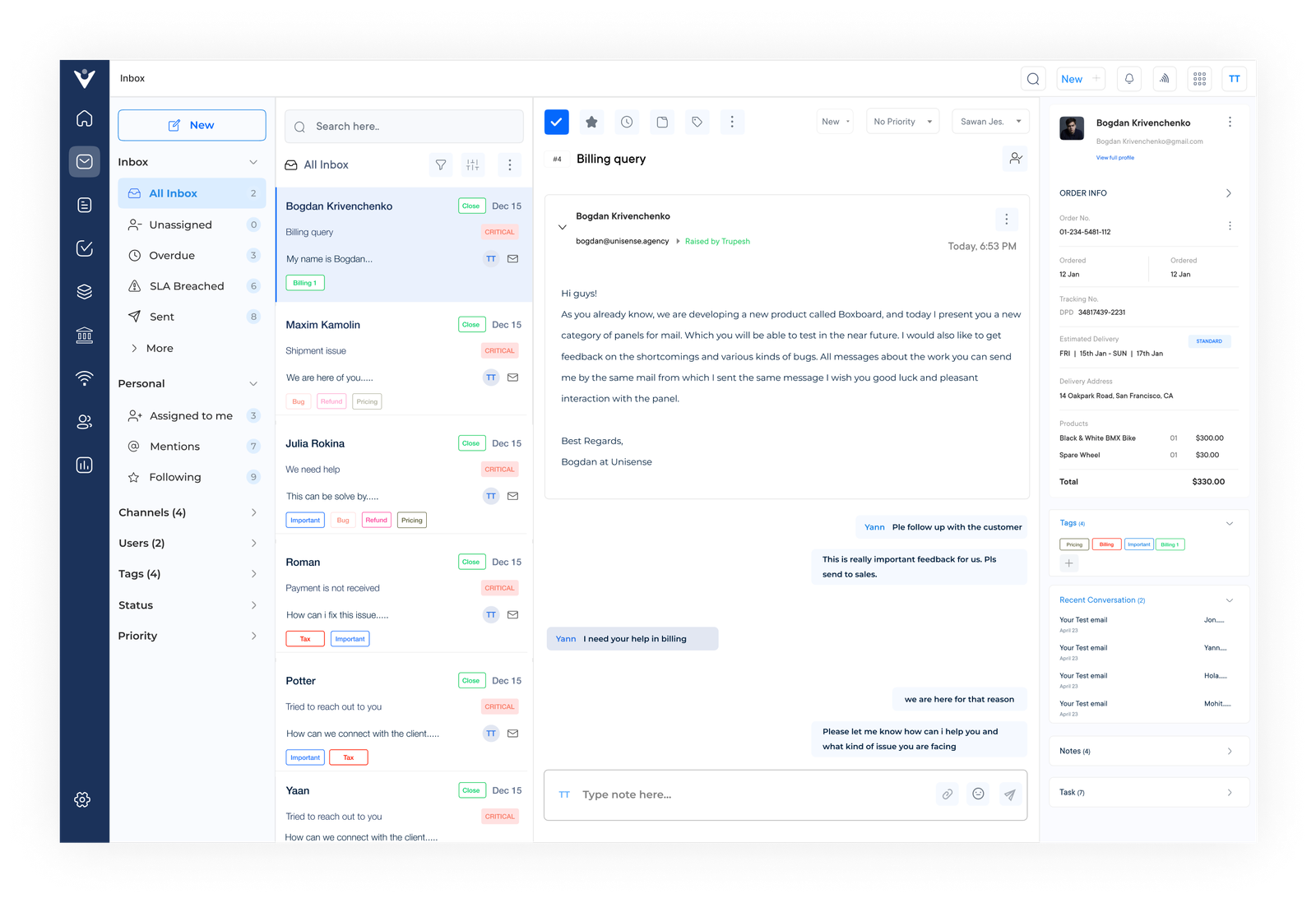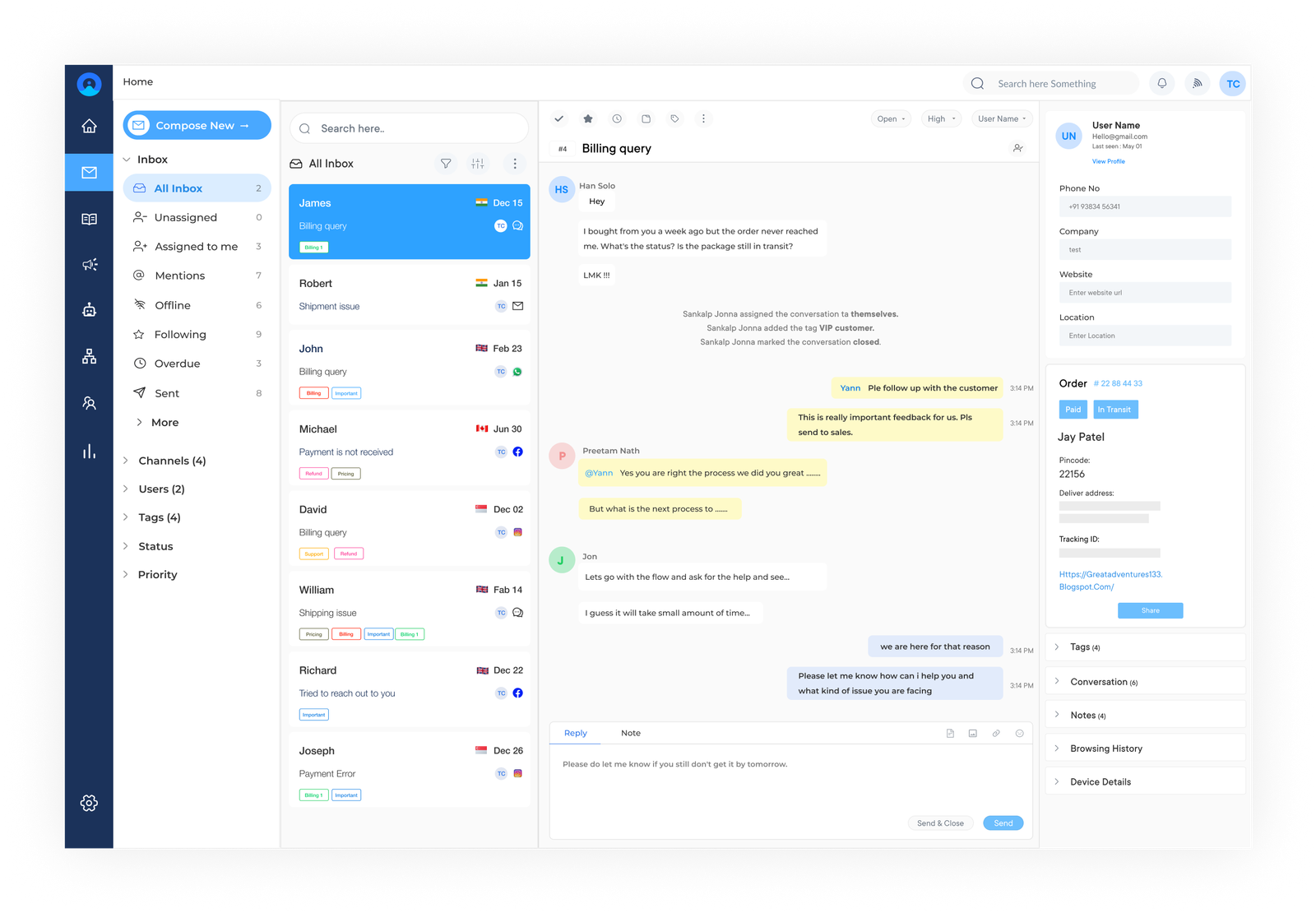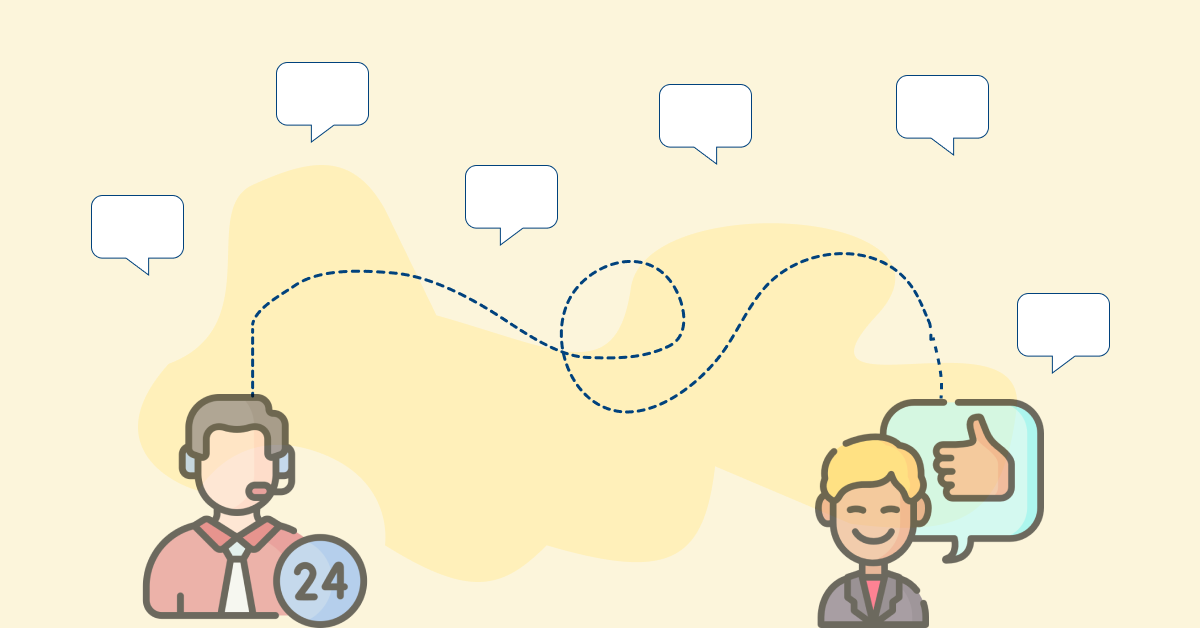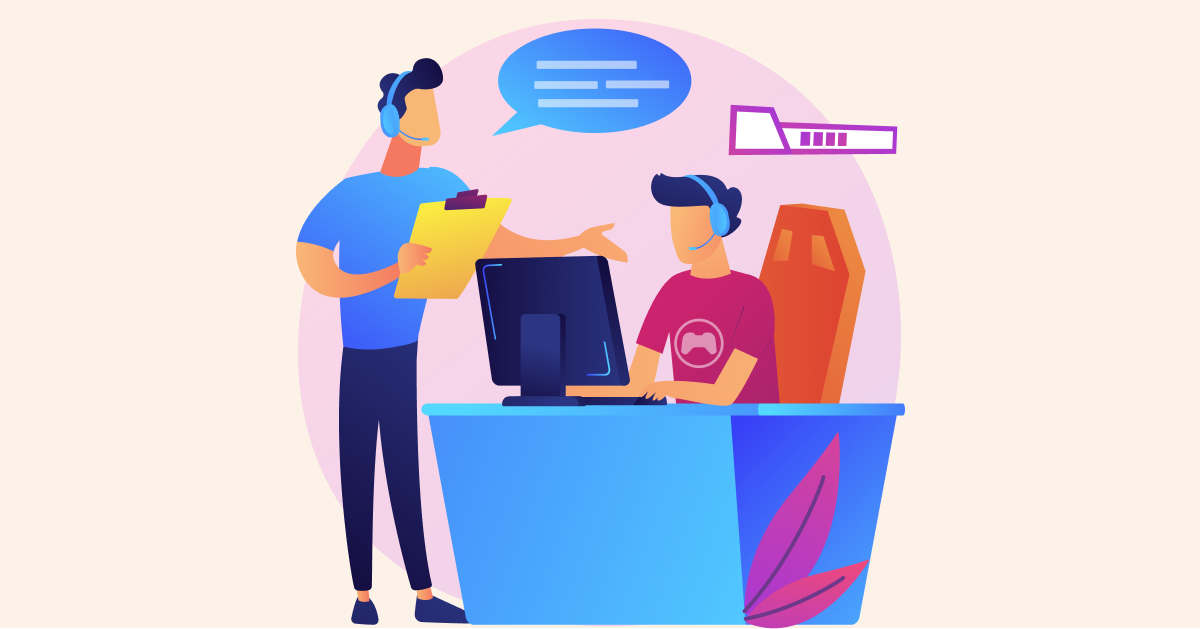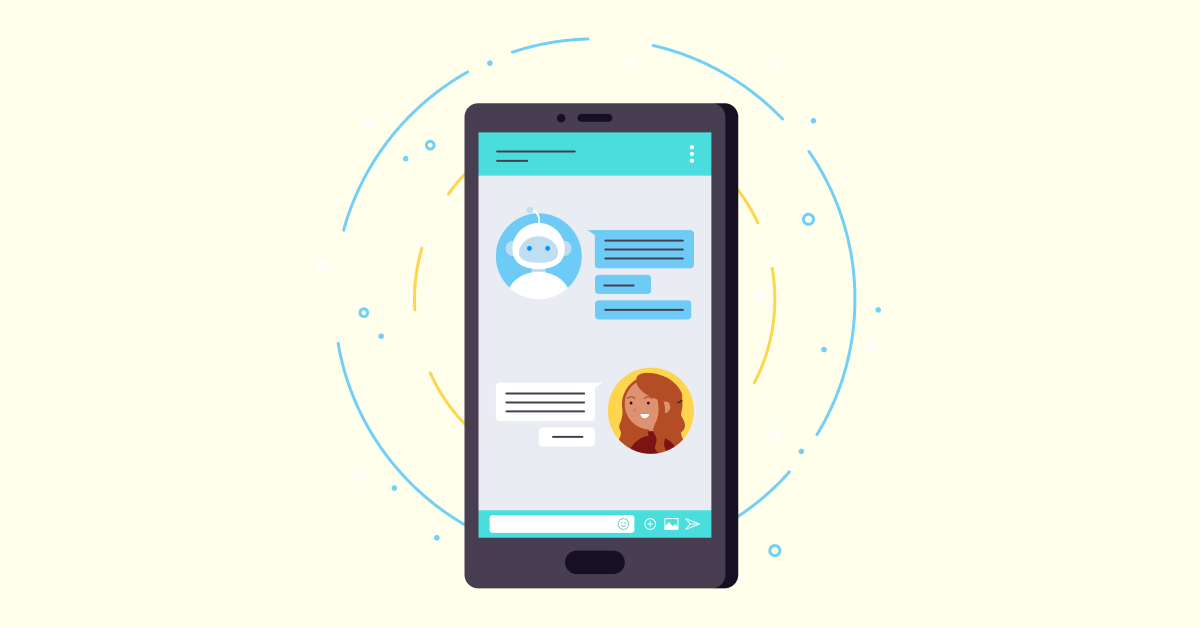Step 1: Identify The Type Of Chatbot You are Building
When it comes to the topic of building chatbots from scratch, the first step is to identify the type of chatbot you want to create. It helps you understand what tasks the chatbot will be able to handle, what interactions it will support and what platforms it will be available on. Businesses can avoid wasting resources on unnecessary features and focus on creating a chatbot that will truly add value to their users.
One common use case for identifying the type of chatbot you are building is customer support. Companies can develop chatbots that provide automated customer service, answering frequently asked questions and resolving issues. It frees up human agents to handle more complex inquiries, resulting in faster response times and improved customer satisfaction.
Ways to implement:
- Define the purpose: Determine the main objective of the chatbot. Clarifying the purpose will guide the development process.
- Consider the target audience: Understanding the target audience allows you to design a chatbot that aligns with their preferences and needs. Consider factors such as age, language and technological proficiency.
- Evaluate available technologies: Research the different types of chatbot platforms and technologies available. It will help you choose the most suitable option for your requirements and budget.
Step 2: Select A Channel
When it comes to building a chatbot from scratch, selecting the right channel is a crucial first step. The channel refers to the platform or medium through which the chatbot will interact with users. Different channels have different capabilities, so it’s essential to choose one that aligns with the goals and target audience.
One important use case for selecting a channel is optimizing customer engagement and support. Businesses can deploy a chatbot through their website to enhance customer service. It will enable them to provide instant responses and resolve queries promptly, resulting in higher customer satisfaction.
Ways to implement:
- Identify the target audience: If your audience consists of tech-savvy individuals who mostly use mobile apps, building a chatbot for a mobile app would be more effective.
- Research channel capabilities: Consider factors such as integration capabilities, language support, and user base when making your decision.
- Analyze user preferences: Pay attention to which platforms the target audience prefers for communication and tailor the chatbot accordingly.
Step 3: Choose The Technology Stack
Choosing the right technology stack involves selecting the combination of frameworks, programming languages and tools that will be used to develop the chatbot. The decision can have a significant impact on the functionality, scalability and overall success of the chatbot.
It will also determine the ease of development, maintenance and future enhancements of the chatbot.
A use case for choosing the technology stack in chatbot development is in the customer support industry. Chatbots are increasingly being utilized as virtual assistants to handle customer inquiries, provide product recommendations and resolve issues. Choosing the right technology stack will ensure the chatbots are capable of handling a large volume of queries, providing accurate responses, and integrating seamlessly with their existing customer support systems.
Ways to implement:
- Assess the requirements: Analyze the specific features, functionalities and integrations you require for the chatbot. Consider factors such as natural language processing, machine learning and platform compatibility.
- Research available options: Explore different technology stacks and frameworks that are popular in the chatbot development community. Consider factors such as community support, documentation, and ease of implementation.
- Prototype and test: Build a prototype using different technology stacks and test them to assess their performance. It will help you make an informed decision based on real-world results.
Step 4: Design The Conversation
Designing the conversation involves planning the flow and structure of the chatbot’s interactions with users. It determines how the chatbot will guide a conversation, ask questions and provide responses. Designing the conversation is essential for ensuring a seamless and user-friendly experience. 88% of users had at least one conversation with a chatbot.
A use case where designing the conversation is crucial is in customer support chatbots. The chatbots need to understand user inquiries, ask relevant follow-up questions and provide accurate solutions or escalate the issue to a human representative when necessary. A well-designed conversation flow ensures a satisfactory customer experience, saving resources for both the company and the customer.
Ways to implement:
- Define user goals and intentions: Understand what users aim to achieve with the chatbot. Identify potential user intents and design the conversation flow accordingly to address the intentions.
- Use natural language: Create conversational responses that mimic human-like language. Use clear sentences, avoid jargon and consider using visual cues where appropriate to make the conversation relatable.
- Incorporate fallback options: Anticipate scenarios where the chatbot might not understand or cannot provide a suitable response. Design fallback options to ensure a helpful outcome even in challenging situations.
Step 5: Train the Bot
One of the most crucial steps in the process of creating a chatbot from scratch is training the bot. The step involves teaching the bot to understand and respond effectively to user requests. The company imparts knowledge and guides its bot, enabling it to offer accurate responses to users.
Effective training enhances the body’s ability to engage in meaningful conversations, increasing user satisfaction and improving overall user experience. A practical use case for training the bot is in customer support. Businesses can provide instant assistance to customers by training their bots with relevant information, answering frequently asked questions and resolving common issues efficiently.
Ways to implement:
- Use conversational data: Utilize existing chat logs and transcripts to train your bot. Analyze past conversations to understand user intents and craft appropriate responses.
- Implement Natural Language Processing (NLP): Incorporate NLP algorithms to enhance your bot’s language understanding capabilities. NLP allows the bot to interpret and process user queries by considering the context behind the words.
- Continuously update and refine: Regularly update the bot’s training to keep it up to date with the latest information and user preferences. Analyze user feedback and monitor bot performance to identify areas for improvement.
Step 6: Test The Chatbot
This step is a crucial part of building chatbots that are effective and successful. It ensures the chatbot meets user expectations and delivers a seamless user experience. Testing the chatbot helps to identify any glitches and make necessary improvements before launching it to the public. The step is very much needed to make sure the bot provides accurate and relevant information to users.
One common use case for testing the chatbot is to simulate real-life user interactions. It includes testing various user inputs and assessing how the chatbot responds to different scenarios. It helps you to refine the chatbot’s responses and ensure that it provides appropriate solutions.
Ways to implement:
- User testing: Invite a group of individuals to interact with the chatbot and provide feedback on their experience. It helps you gauge user satisfaction, identify any areas for improvement and gain insights into user preferences.
- Functional testing: Examine the individual features and functionalities of the chatbot to ensure they are working correctly. Test all the buttons, links and options to ensure they provide the intended information.
- Performance testing: Evaluate how well the chatbot performs under different conditions such as high traffic or simultaneous user interactions. It ensures that it can handle multiple queries effectively without crashing or slowing down.
Step 7: Deploy And Maintain The Bot
Once you are done with building the chatbot, the next crucial step is to deploy and maintain it. The step involves making your chatbot live and ensuring its proper functioning. Deploying and maintaining the bot is crucial as it allows the chatbot to interact with real users to provide them with the desired assistance. It is the culmination of all your efforts and ensures the chatbot is reaching its intended audience.
Proper deployment ensures the chatbot is accessible through various platforms such as websites, messaging apps or social media platforms. An essential aspect of maintaining the bot is to regularly monitor its performance and make necessary updates to keep it efficient. Regular maintenance helps in identifying and resolving any technical glitches or user experience issues, ensuring smooth functionality.
Ways to implement:
- Hosting on a website: You can deploy the chatbots by integrating them into the website. It enables visitors to interact with the chatbot directly on the site, making it easily accessible for customers.
- Integration with messaging apps: Deploy your chatbot on popular messaging apps like Facebook Messenger, Slack, or WhatsApp. It ensures users can engage with the chatbot through their preferred apps.
- Cloud-based services: Utilize cloud-based platforms or software services that provide chatbot deployment and maintenance solutions. The platforms offer scalability, security and easy integration options, streamlining the process.
How to Build Chatbots: The Key Features
Let us go through the key features businesses must consider while they build AI chatbots that are revolutionizing communication and making life just a little bit easier.
